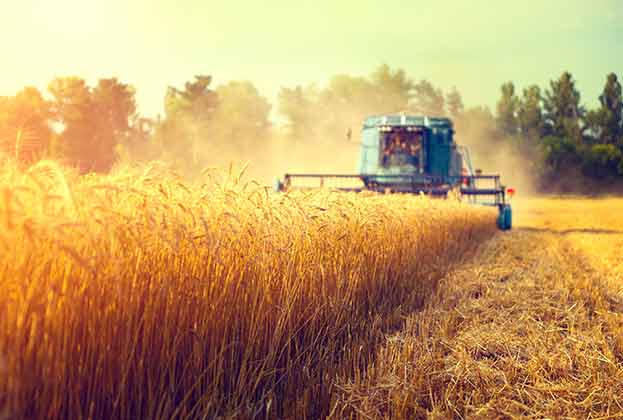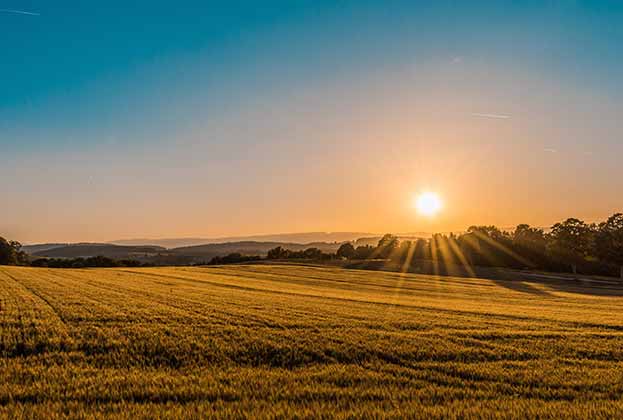Sustainable agriculture has become a significant issue with the increasing need to balance economic productivity goals with environmental and social costs
Sustainable agriculture remains a challenging aspiration. Globally, accountability in land ownership remains relatively weak, with few requirements to preserve local social and environmental capital when seeking economic opportunity. But with resource pressures mounting and the increasing role citizen and shareholder activism is taking in tackling climate change inaction, real progress looks more likely.
Agriculture’s thirst for water and resources, the changing patterns in diets, the amount of produce wasted in both developed and developing food systems, plus the urgent need for us to change our approach to environmental management, all point to urgent changes in the way we grow and consume food and energy.
As part of the supply chain, food producers cannot ignore these factors and need to address whether they are supplying what the consumer wants, at the right price, to the right location, and at a sustainable cost. It is balancing economic productivity goals with the environmental and social cost.
As global populations grow – to a predicted nine billion by 2050 – and diets evolve, sustainability becomes an increasingly significant issue
Savills Research
An important global concern
As global populations grow – to a predicted nine billion by 2050 – and diets evolve, sustainability becomes an increasingly significant issue. Meat consumption is firmly in the climate spotlight, with substantial data pointing to its resource inefficiency.
Just take protein production as an example – our research shows that the environmental impact of lamb is less than half that of beef to produce the equivalent amount of protein, with poultry just 19 per cent and cereals 9 per cent. We accounted for greenhouse gas emissions, land and water use.
However, focusing on production efficiency ignores the ecosystem value of the protein source. Grazing ruminants convert inedible biomass into food that humans can eat, forming a key element of a truly sustainable diet. Most white protein is more 'resource efficient' on a per kilo of protein produced basis, but monogastric animals also consume large quantities of grains and pulses that humans could consume directly. Tackling change in dietary patterns to achieve a more sustainable agriculture is complex. Further, one country cannot export its problems to another and claim a successful reduction of an issue such as carbon emissions or water use.
At a global level, the imperative is to reconcile the tensions between consumer demand and domestic productive capacity. The barriers to achieving this rebalancing seem insurmountable: a major realignment of national trade policies to meet global supply-and-demand requirements, alongside a substantial shift in global diets, would be necessary.

EMBRACING AGRITECH
Developments in remote sensing and data analysis have been the key to unlocking the value of technology in cultivation and livestock systems, with the principle driver being to improve the bottom line of farm businesses through better insights into systems operation.
A culmination of drawing together a range of innovations to increase productivity throughout the supply chain starting with the raw materials for farm inputs through production, processing, logistics and retailing to the consumer results in a smarter food system.
In a global market where resources are limited and demand (due to population growth) is increasing we should embrace all opportunities to use technology to our advantage. However, there is one caveat – its ultimate end use must make economic sense. As the tech market matures, the cost of many agritech solutions should decrease, with clear winners spotting the right problems to solve at the right cost/benefit point.
These winning technologies might include:
- Robotics to replace poor-quality jobs and enable precision application of inputs
- Sensors to improve accuracy and timeliness
- SMART (Sustainable, Managed, Accountable, Responsible and Trusted) irrigation systems to reduce water requirements
- Big Data analysis to optimise decision-making and systemwide evaluation
- Blockchain to reduce food fraud and improve accountability.
.jpg)
International frameworks
* Economist’s Intelligence Unit’s Global Food Security Index
Accountability for international investment in farmland includes the 2030 Agenda for Sustainable Development, adopted by all United Nations Member States in 2015, which provides a shared blueprint for peace and prosperity for people and the planet, now and into the future. More information can be accessed at sustainabledevelopment.un.org. At its heart are the 17 Sustainable Development Goals (SDGs), which are an urgent call for action by all countries – developed and developing - in a global partnership. The SDGs enable impacts to be compared, but don’t necessarily account for a reinvestment in natural resources. Globally, a shift to Natural Capital Accounting (NCA) may help to address this investment imbalance. NCA seeks to account for the cost of reinvestment in natural resources in land management, introducing a better accountability framework between food production and land management.
Tracking progress in delivering sustainable agriculture is being helped by projects such as the Economist’s Intelligence Unit’s Global Food Security Index (GFSI), which covers 67 of the world’s major agricultural producers, representing over 90% of global GDP and 80% of global population. Each country is ranked by indicators across three primary categories: Food Loss and Food Waste, Sustainable Agriculture and Nutritional Challenges. The index can be accessed at foodsecurityindex.eiu.com.
Some of the key findings from the 2018 GFSI include:
- Overall, the GFSI records a slight improvement in global food security – with the most substantial gains achieved by lower-middle- and low-income countries as they strengthen agricultural infrastructure
- Higher-income countries are heavily exposed to the impact of climate and natural resource risks – a threat to be prepared for
- Fertile land, fresh water and the oceans are all essential resources that provide the foundation for food security
- Climate change will affect food production for all physical systems – marine and terrestrial – as basic environmental conditions shift
- Financial risks threaten the affordability of food, especially for low-income households
- Political stability is essential for agricultural production
- Trade contributes to food security, but importing countries are vulnerable to rising protectionism.
.jpg)
NEW GENERATION GROWING SYSTEMS

Technology is enabling a new generation of growing systems to become commercially viable. Growing plants indoors is not exactly a novel concept, but technological innovation has achieved both dramatic and continuing incremental improvements in growing efficiency that make controlled growing systems increasingly attractive to both growers and investors.
Hydroponics can reduce water usage by up to 95% in some cases. Controlling ambient conditions and often operating in sterilised environments means yields are optimised and processing costs reduced. This level of control means that climatic variation, and the effects of freak weather events, are minimised or even completely eliminated.
Increasing domestic production reduces the reliance on imports and hence exposure to trading risks. It also has the potential benefit for consumers of avoiding price fluctuations due to international events. Pricing in this risk of non-supply and the environmental damage in trading fresh produce creates a clear advantage in on-shoring production.
Read the articles within Global Farmland Index below.
.jpg)


.jpg)